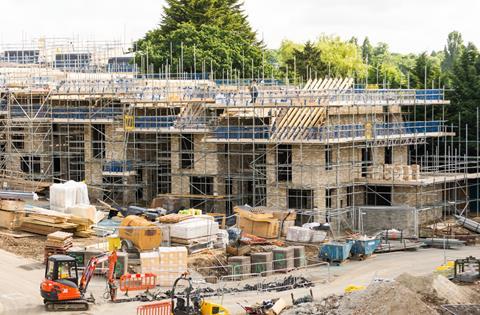Starts on affordable homes in London have dropped by 76% compared to last year
G15 members and the Centre for London have called for the government to increase AHP grant funding to £15.1bn per year over the next 10 years to address the affordable housebuilding crisis.

The letter also proposes the establishment of an Affordable Housing Commission, which would put an end to “the short-termism that has dominated housing policy”, by setting housebuilding targets and holding the government accountable for delivering them.
The joint letter, signed by Fiona Fletcher-Smith, chair of the G15 and chief executive of L&Q, and Antonia Jennings, chief executive of think tank Centre for London, was sent to Michael Gove on 16 February.
>> See also: Homes England says affordable housing delivery will be lower than NAO estimates
>> See also: Housing Today calls for affordable housing funding review and planning overhaul
The letter said: “Your recent interventions do not go far enough to address what, by your own admission, is a broken system. The issues plaguing the current housing market go back decades and have been entrenched by short-term fixes.”
It added: “Despite the crisis facing Londoners, the Government has failed to step up and invest in the delivery of social housing. Insufficient sustainable funding, among many structural issues, is a critical reason why housing is in crisis in our capital city.”
According to G15 data, London’s major housing associations are expected to start construction on 1,769 affordable homes this year, compared to the 7,363 homes last year— a decrease of 76%.
The data also reveals that these housing associations have reduced their development both in and outside of London, going from 14,658 units per year to 6,387 units in 2024.
This means that only 35% of the newly planned homes are located in London, whereas last year, 70% of the starts were in the city.
The letter also recommended that the government work with Sadiq Khan to establish development corporations focused on building homes in strategically designated sections of the green belt, ensuring compensation for any impact on natural areas.
The G15 and Centre for London said that one estimate indicates that “900,000 new homes could be accommodated on approximately 25,000 hectares of Green Belt land, conveniently located within walking distance of train stations with robust connections to central London”.










No comments yet